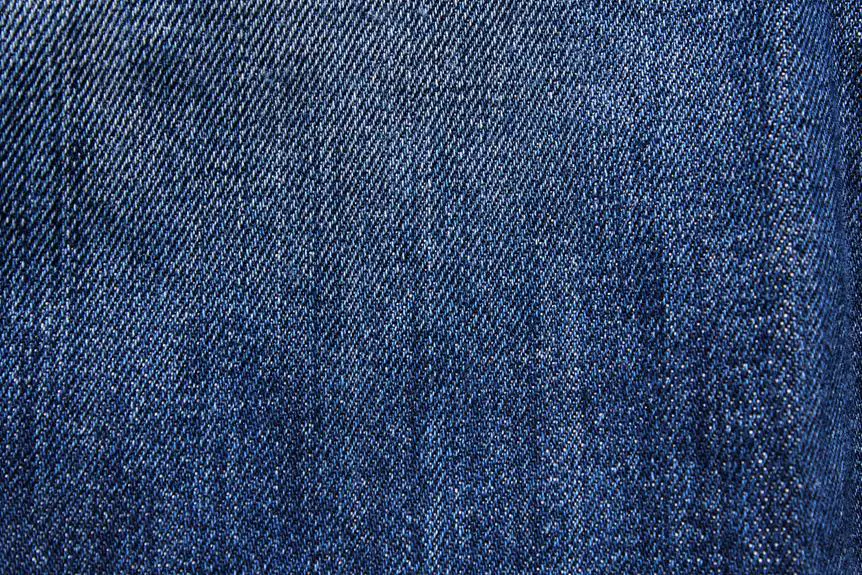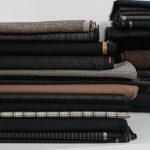When it comes to understanding fabric, thread weights hold the key to unlocking the potential of your projects.
You'll explore the intricate world of thread weights in fabric, gaining mastery over the terminology, common weights, and their suitable applications.
Delve into the factors influencing thread weight selection and learn to match the perfect weight to each fabric type.
This knowledge will empower you to confidently work with a variety of thread weights and elevate your sewing and crafting skills to new heights.
Key Takeaways
- Thread weight refers to the thickness of the thread, with lower numbers indicating thicker threads.
- The appropriate thread weight should be selected based on factors such as fabric type, project requirements, and needle size.
- Different fabric types require different thread weights, with lightweight fabrics working well with finer thread weights and heavyweight fabrics benefiting from thicker thread weights.
- When working with different thread weights, it is important to adjust the sewing machine's tension settings and needle size accordingly.
Understanding Thread Weight Terminology
Understand the thread weight terminology by learning the specific terms used in the fabric industry.
When it comes to understanding thread weight, it's essential to grasp the concept of thread tension. Thread tension refers to the amount of pull the top thread and the bobbin thread apply to the fabric. It's crucial to find the right balance to achieve well-formed stitches.
Furthermore, familiarizing yourself with the thread weight conversion table is vital. This table provides a comparison of thread weights across different measurement systems, such as weight per unit length or the number of strands. By utilizing this table, you can seamlessly switch between thread types without compromising the integrity of your project.
Understanding the terminology related to thread weight will empower you to make informed decisions and adjustments, ultimately leading to high-quality results in your sewing or quilting endeavors.
Common Thread Weights and Their Uses
To continue from the previous subtopic, frequently adjusting the thread weight according to the fabric type and project requirements will enhance the quality of your stitching. Understanding the common thread weights and their uses is essential for achieving successful sewing outcomes.
Thread weight is denoted by a number on the thread spool or in a thread weight chart. The lower the number, the thicker the thread. For instance, 30wt is thicker than 50wt. Common thread weights include 12wt, 30wt, 40wt, and 50wt.
12wt is excellent for bold topstitching and decorative work, while 30wt is suitable for machine embroidery and decorative stitches. 40wt is versatile and can be used for most sewing projects. 50wt is ideal for piecing and quilting due to its fine nature.
Understanding thread weight conversion and standards is crucial when working with international patterns or threads. For example, a 50wt thread in one brand may not be the same thickness as a 50wt thread in another. Being aware of these differences will help you choose the right thread for your projects.
Factors Affecting Thread Weight Selection
When selecting thread weight, consider the fabric type and project requirements to achieve optimal stitching quality. The impact of thread weight on your sewing project can't be overstated. The thread weight can affect the overall appearance, durability, and functionality of the finished piece.
Thicker threads are more visible and can add texture to the seams, while thinner threads provide a more delicate and inconspicuous finish. The weight of the fabric also influences the selection of thread weight. For instance, lightweight fabrics such as chiffon or organza require finer threads to prevent adding bulk to the seams, whereas heavy fabrics like denim or canvas may benefit from thicker threads for added strength.
Thread weight variation is essential for achieving balanced and professional-looking stitches. Using the wrong thread weight can result in puckering, breaking, or even damaging the fabric. It's crucial to match the thread weight with the needle size and fabric weight to ensure smooth and secure stitching.
Additionally, the project requirements, such as the desired seam finish, decorative stitching, or topstitching, also play a pivotal role in determining the appropriate thread weight. By carefully considering these factors, you can select the ideal thread weight to elevate the quality and aesthetics of your sewing projects.
Matching Thread Weight to Fabric Type
Selecting the appropriate thread weight for your fabric type is crucial for achieving high-quality stitching results. Stitch quality and color coordination are key factors to consider when matching thread weight to your fabric. Different fabrics require different thread weights to ensure the best results. Here's a table to help you match the right thread weight to your fabric type:
| Fabric Type | Recommended Thread Weight |
|---|---|
| Lightweight | 50-60 |
| Medium-weight | 40-50 |
| Heavyweight | 30-40 |
For lightweight fabrics such as chiffon and organza, a finer thread weight (50-60) is recommended to prevent the thread from overwhelming the delicate fabric. Medium-weight fabrics like cotton and linen work well with thread weights ranging from 40-50. Finally, heavyweight fabrics such as denim and canvas require a thicker thread weight (30-40) to ensure the stitches can withstand the fabric's durability. By matching the appropriate thread weight to your fabric type, you can achieve optimal stitch quality and enhance the overall appearance of your project.
Tips for Working With Different Thread Weights
Adjust your sewing machine's tension settings to accommodate different thread weights for optimal stitching results. When working with heavier threads, increase the tension to prevent loose, loopy stitches. Conversely, when using lighter threads, decrease the tension to avoid puckering or breaking the thread. Testing the tension on a scrap of fabric before starting your project can help you achieve the perfect setting.
Another important consideration is the needle size. For heavier threads, use a larger needle size to accommodate the thread's thickness and prevent it from fraying or breaking during stitching. Lighter threads should be paired with smaller needles to ensure they pass smoothly through the fabric without causing any damage.
When switching between different thread weights within a single project, be sure to adjust the tension and needle size accordingly. This extra step may seem tedious, but it's crucial for achieving professional-looking results.
Frequently Asked Questions
Is There a Standard Thread Weight Measurement System Used Worldwide, or Are There Variations in Different Regions?
There isn't a standard thread weight measurement system used worldwide. Instead, there are variations in different regions. Understanding these regional variations and their impact on fabric production is crucial for mastery in the textile industry.
Are There Any Special Considerations for Using Different Thread Weights in Machine Embroidery or Quilting Projects?
When using thread weights for hand embroidery, consider the fabric's density and the desired level of detail. For machine quilting, a lighter weight is often better, while heavier weights can add dimension to your projects.
Can Using a Heavier Thread Weight Affect the Drape or Movement of the Fabric in Garment Construction?
Using a heavier thread weight can impact the drape of the fabric in garment construction. It may also affect sewing machine compatibility, so be mindful of these factors when selecting thread weights for your projects.
Are There Differences in Thread Weight Options for Natural Fibers Versus Synthetic Fibers?
When choosing thread weight, differences exist between natural and synthetic fibers. Thread weight measurement varies for each type, influencing the outcome of machine embroidery and quilting projects. Consider the specific needs of your fabric.
How Does Thread Weight Impact the Durability and Longevity of the Finished Project, Particularly in High-Stress Areas Like Seams or Hems?
Using a heavier thread weight in high-stress areas like seams or hems can significantly impact the fabric's strength and durability. It provides added reinforcement, reducing the risk of fraying or tearing in those critical areas.
- How Does Ring Spun Cotton Affect Garment Fit and Shape Retention? - August 13, 2024
- What Are the Challenges in Producing Ring Spun Cotton? - August 13, 2024
- Is Ring Spun Cotton Suitable for Plus-Size Clothing? - August 13, 2024






